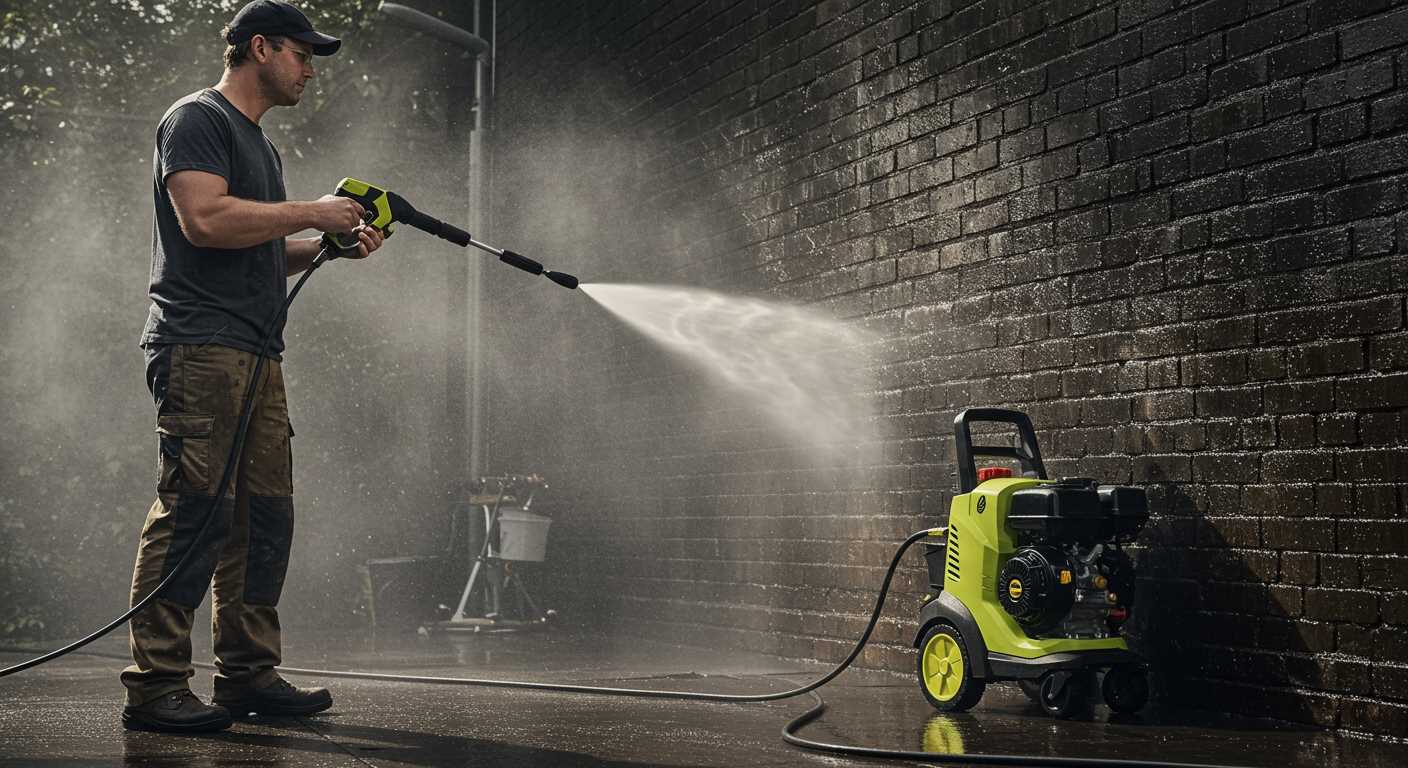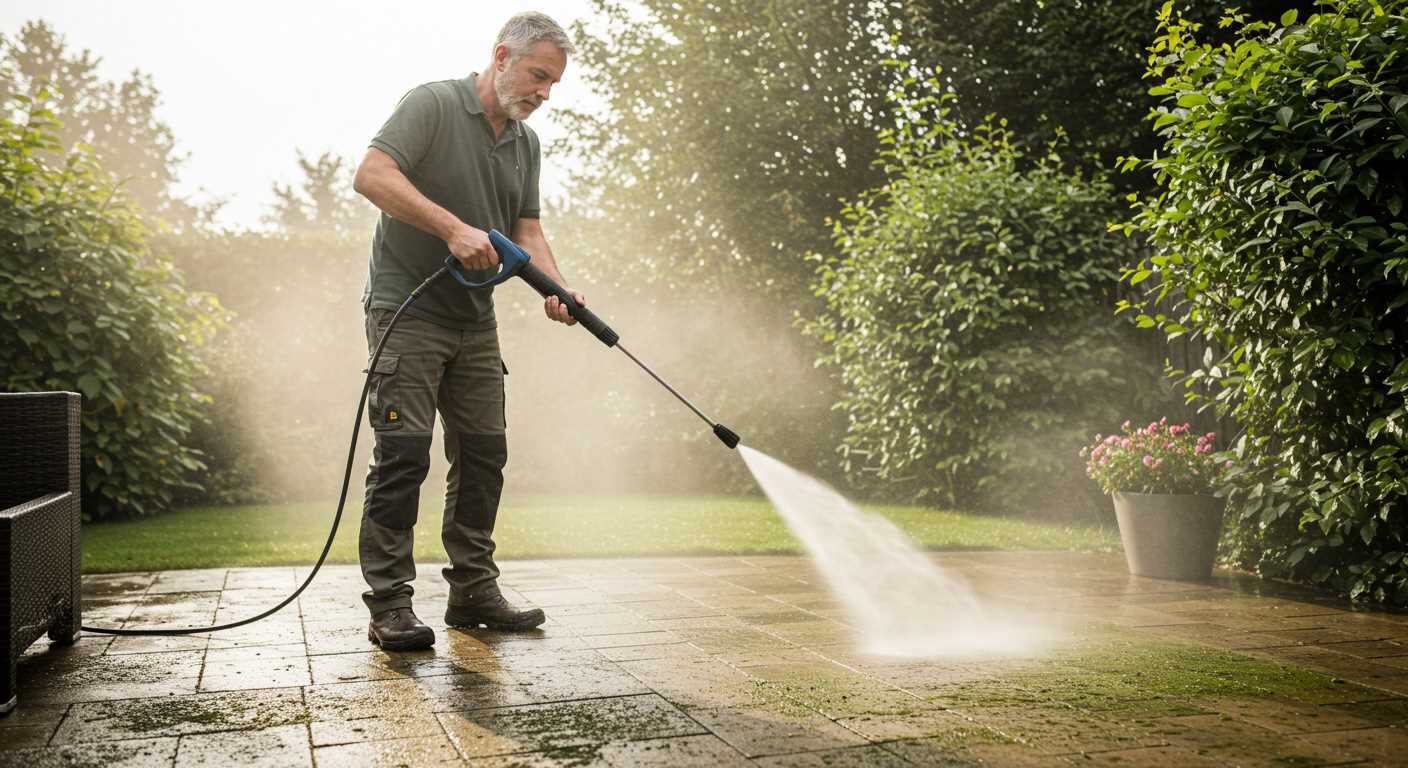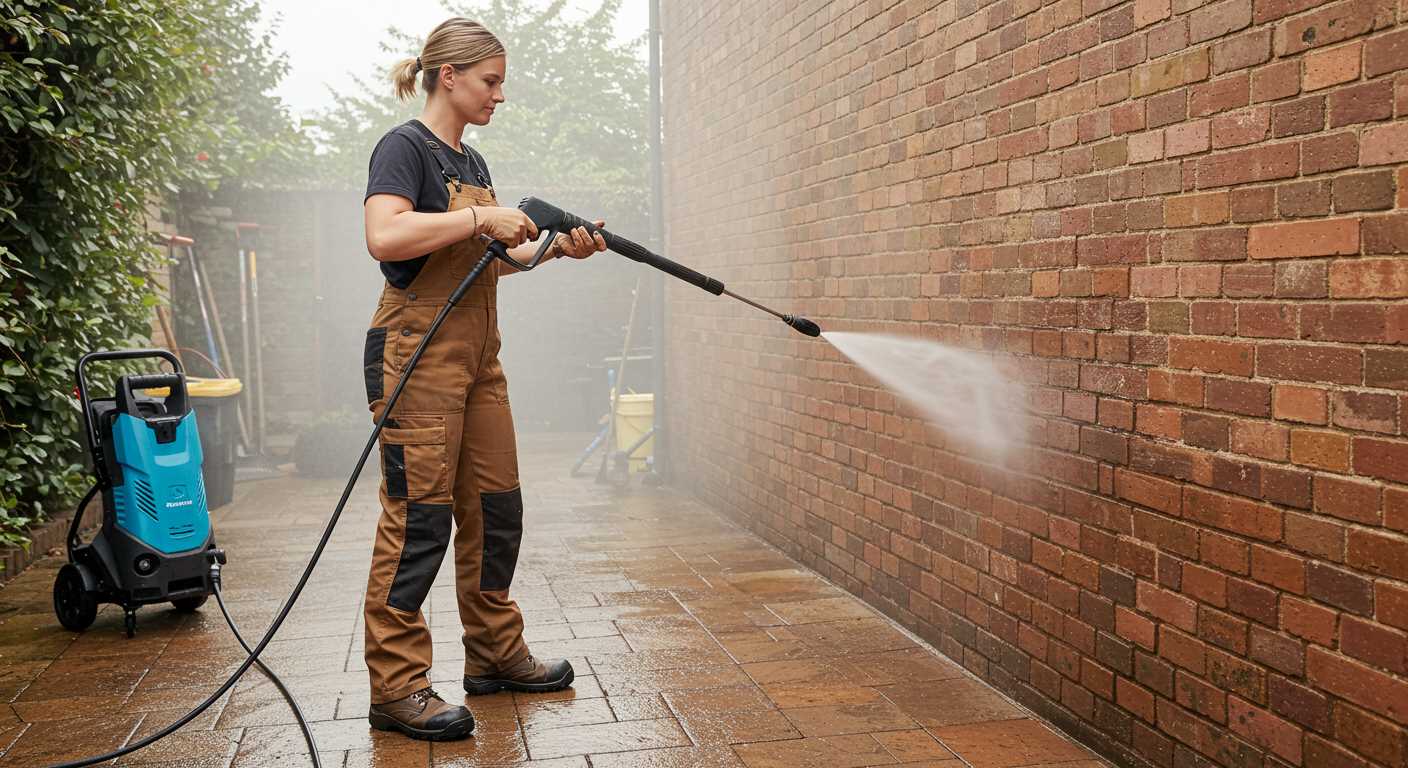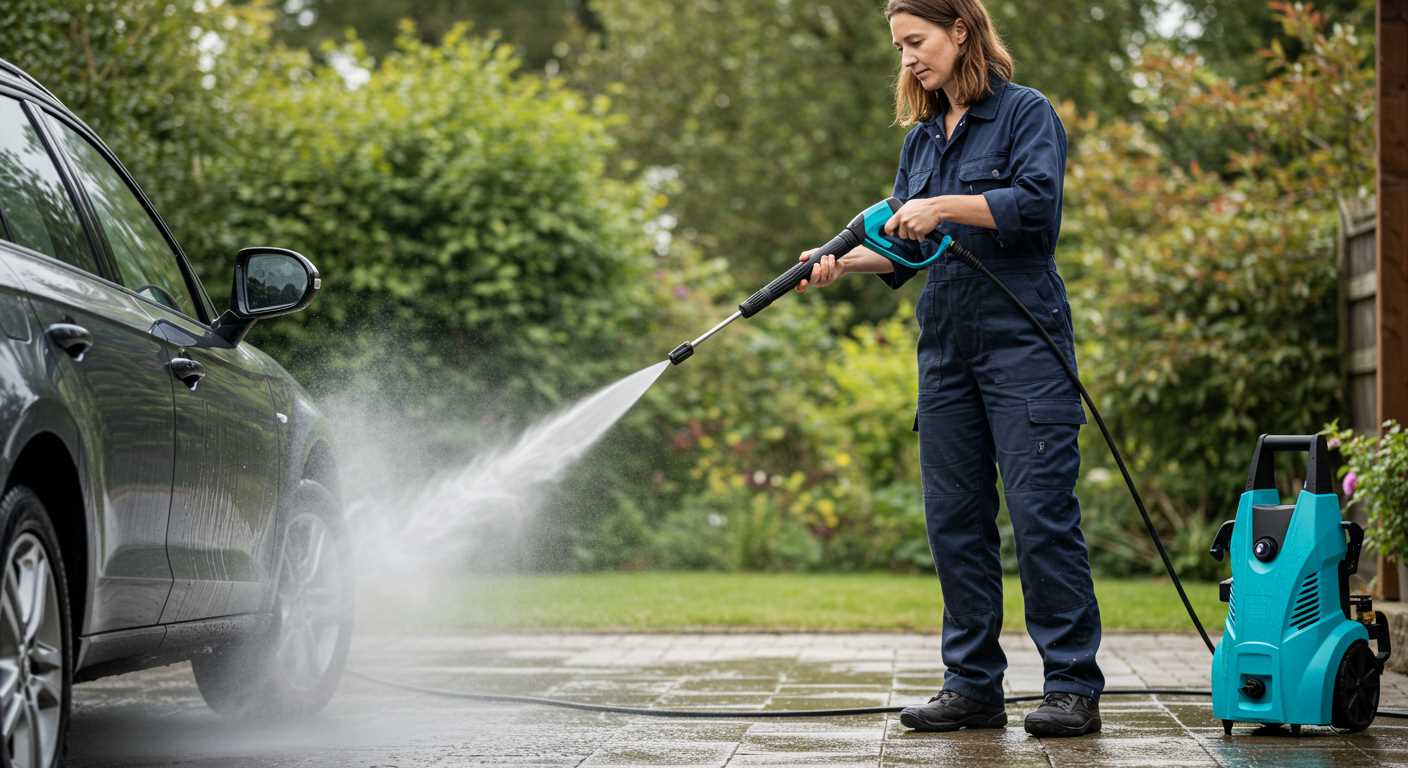Flush the water system with a solution of antifreeze designed for water pumps. This prevents any remaining moisture from freezing and damaging components. After draining, run the engine briefly to circulate the antifreeze through the pump.
Next, ensure the engine is in top condition. Change the oil if it’s dirty and replace the spark plug if necessary. Stale fuel can cause issues, so empty the fuel tank or add a stabiliser to prevent degradation if you plan to leave fuel inside.
Store your equipment in a dry, sheltered place to protect it from harsh elements. Cover it with a protective tarp to avoid dust and moisture accumulation. Taking these steps will extend the life of your machine and ensure it performs well when the warm weather returns.
Check the hoses and connections for cracks or damage. It’s best to inspect these components before storing; replacing any faulty parts now can save you time and hassle when you’re ready to use it again.
Steps to Prepare Your Cleaning Device for Cold Weather
To prevent damage from freezing temperatures, follow these specific steps.
Fuel System Management
- Empty the fuel tank completely. You can run the unit until it stops to ensure all gasoline is consumed.
- Add a fuel stabiliser to the remaining gasoline before emptying. This prevents the fuel from degrading and protects the engine.
Water System Protection
- Detaching hoses and nozzles is essential. Drain all water from the lines to avoid freezing and cracking.
- Flush the system with antifreeze designed for pressure cleaning devices to help prevent corrosion and freezing in the pump. Follow the manufacturer’s instructions for the proper antifreeze amount.
After these procedures, store the equipment in a dry location, ideally at room temperature, to avoid temperature extremes.
Drain the Fuel System Properly
To ensure a reliable start-up after the cold months, it is crucial to eliminate fuel from the tank and lines. First, run the engine until it completely consumes the remaining fuel. This process clears the entire fuel system, preventing any residue from gumming up the components.
After the engine stops, disconnect the fuel line from the carburettor. Use a fuel siphon pump to remove any remaining liquid within the tank. Make sure to collect the fuel in an appropriate container for disposal or recycling.
Once the fuel tank is empty, consider adding a fuel stabiliser to any fresh fuel you plan to store for spring use. This helps prevent degradation and keeps the fuel fresh. Store the clean fuel in a sealed, labelled container in a cool, dry location, away from direct sunlight and heat sources.
Finally, inspect the fuel lines for any signs of wear or damage. Replacing aging components will enhance the longevity and performance of your machine.
Check and Change the Oil

Inspect the oil level and condition before the colder months. Start by removing the dipstick; if the oil appears dark and thick, it needs changing. Use a clean container to drain the old oil, ensuring the engine is cold for safety. Replace it with new oil, choosing a type that meets manufacturer specifications–usually a non-detergent 30W or 10W-30 for winter use.
Changing the Oil
To change the oil, tilt the unit slightly to drain old fluid completely. Avoid mixing new and old oils. Fill the crankcase to the recommended level, usually indicated on the dipstick. After refilling, start the engine briefly to circulate the new oil, then check the level again and top up if necessary. This step protects the engine from corrosion and wear during storage.
Maintenance Tips

Consider changing the oil every 50 hours of operation or annually, whichever comes first. Regular oil checks can prevent long-term damage and ensure the motor remains in good condition. Regular maintenance can significantly extend the life of your equipment.
Clean the Water Filter and Hose
Start by disconnecting the water supply hose from the machine and the faucet. Check the water filter for any debris or sediment. Remove the filter and clean it under running water until all particles are gone. If the filter is damaged or heavily corroded, replace it to ensure proper flow during operation next season.
Next, inspect the water hose for kinks, cracks, or leaks. A damaged hose can cause water flow issues and may lead to performance problems. Flush the hose with clean water to eliminate any residue before storing it. Once cleaned, make sure to coil it neatly to prevent tangling.
Inspect and Protect the Pump
Check the pump for leaks or cracks in the casing. Any visible damage can significantly affect performance and needs immediate attention. A thorough inspection helps identify problems before they worsen.
Use a pressure washer pump protector that contains antifreeze designed for these types of equipment. This fluid will safeguard internal components against freezing temperatures. Pour the protector into the pump following the manufacturer’s instructions to ensure proper installation and coverage.
Common Signs of Pump Damage
| Sign | Description |
|---|---|
| Leaking Fluid | Visible signs of fluid near the pump area may suggest seal failures. |
| Noise During Operation | Unusual noises may indicate internal wear or damaged parts. |
| Poor Pressure Output | Inability to generate adequate pressure can point to pump failure. |
After inspection, ensure the pump is adequately lubricated. Apply the recommended lubricants to key areas as per the manufacturer’s specifications. This reduces wear and enhances the lifespan of the unit.
Finally, properly store the equipment in a protected environment, away from extreme temperatures. Cover it to prevent dust and debris from accumulating, which could cause further issues during reactivation.
Store the Nozzle and Attachment Safely

After completing the necessary maintenance, storing the nozzle and attachments correctly is paramount to ensure their longevity. Start by detaching all accessories from the machine. This prevents unnecessary strain on the connectors and reduces the risk of damage during storage.
Recommended Storage Steps
- Clean the attachments thoroughly with water to remove any dirt or debris.
- Dry all parts completely to prevent rust or corrosion.
- Inspect for any signs of wear or damage; replace if necessary.
Next, store the nozzles in a designated container. Using a small bin or pouch specifically for nozzles and attachments will keep them organised and easily accessible when needed. Using separate compartments can prevent any potential mix-ups between different types.
Safe Plumbing Practices

- Wrap hoses neatly to prevent kinks; consider securing them with hose reels or ties.
- Ensure that nozzles are protected from impact, as any cracks can lead to performance issues later.
Keep the container in a dry, climate-controlled space, preferably elevated from the ground to avoid exposure to moisture. Labeling the storage container can also expedite the retrieval process when you’re ready for your next project.
Remove and Clean the Spark Plug
Begin by disconnecting the spark plug wire to ensure safety. Use a spark plug wrench for removal. Check the condition of the spark plug–look for signs of wear, corrosion, or deposits. If it appears overly damaged, replace it.
To clean the spark plug, employ a wire brush to remove any carbon deposits. For deeper cleaning, consider using a specialised cleaner designed for spark plugs or a mixture of water and baking soda, applying it with a cloth or sponge. After cleaning, ensure it’s dry before reinstalling.
Check the Spark Plug Gap
Use a feeler gauge to measure the gap at the tip of the spark plug. The optimal distance is usually specified in the owner’s manual. If the gap is too wide or too narrow, adjust it gently using a spark plug gap tool. This step ensures proper ignition and operation during use.
Reinstall the Spark Plug
When reinstalling, tighten it by hand, then give it a slight turn with the wrench, being careful not to over-torque. Reconnect the spark plug wire securely. This step is crucial for safe and effective machine performance during start-up.
| Step | Action |
|---|---|
| 1 | Disconnect the spark plug wire. |
| 2 | Remove the spark plug with a wrench. |
| 3 | Clean the plug using a wire brush or cleaner. |
| 4 | Check and adjust the spark plug gap. |
| 5 | Reinstall the spark plug and reconnect the wire. |
Maintaining the spark plug will ensure optimal performance when operating your cleaning device in the coming season. Regular checks and cleaning are key to efficiency and longevity.
Find the Right Storage Environment
Choose a dry, temperature-controlled space away from direct sunlight. A garage, shed, or storage room is ideal. Ensure the area is well-ventilated to prevent humidity build-up, which can lead to rusting and mould.
Keep the equipment off cold concrete floors by placing it on a wooden platform or shelf. This prevents moisture seeping into the unit during winter months. Additionally, avoid placing it near heaters or heat sources, which could cause thermal shocks and damage the components.
If possible, use a protective cover to shield the machinery from dust and debris while stored. Ensure the cover allows for airflow to prevent any condensation. Regularly check the storage area for any leaks or signs of water ingress.
Lastly, maintain a safe distance from flammable materials and chemicals, as these hazards could compromise both safety and equipment integrity during storage.
FAQ:
What steps should I take to winterize my gas pressure washer?
To winterize your gas pressure washer, first, ensure the unit is turned off and cool. Disconnect the spark plug and drain the fuel tank completely, as stale fuel can cause engine problems. Next, run the engine until it stops to clear out any remaining fuel. After that, add a fuel stabiliser to a small amount of fresh fuel and run the engine again for a few minutes to distribute the stabiliser throughout the system. Then, ensure all water is drained from the pump and hoses; you might want to use a pump saver to protect the internals during freezing temperatures. Finally, store the washer in a dry, sheltered place.
Why is it important to drain the fuel from my pressure washer before winter?
Draining the fuel is crucial because old fuel can create varnish and gum within the carburettor and fuel lines, which may lead to starting issues in the spring. Additionally, any remaining fuel can degrade and cause clogs, negatively impacting performance. By removing the fuel and running the engine, you ensure that the system is clean and ready for the next use.
Can I use antifreeze to winterize my gas pressure washer?
Using antifreeze is not typically recommended for gas pressure washers. Instead, it’s better to use a pump saver designed specifically for pressure washers. This product helps protect the internal components from freezing without the risk of damaging seals or other parts. If you’re in an area with extremely low temperatures, it’s best to follow the manufacturer’s instructions and use the appropriate protective products.
How do I know if I’ve completed winterization properly?
You can check your winterization by inspecting several factors. Ensure that the fuel tank and carburettor are completely empty of fuel. Listen for any remaining liquid in the pump if you shake it gently; there should be no sloshing sound. Additionally, look for any residual water in hoses and the wand. If you’ve added a pump saver and stored the washer in a dry, undercover area, it’s likely that you’ve finished the process correctly. To be extra cautious, check the owner’s manual for any specific requirements related to your model.
What should I do if I forgot to winterize my pressure washer?
If you realise you’ve forgotten to winterize your pressure washer and cold weather has set in, immediate action is essential. First, determine if the washer has been exposed to freezing temperatures for an extended time. If it hasn’t, run it as per its instructions to see if it still operates. If the machine has been frozen, it’s advisable to take it to a professional for inspection and repair, as internal components may be damaged. Always try to ensure it is safely winterized at the beginning of the season to prevent such issues from arising.






